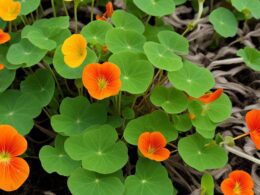A lush carpet of green grass is the perfect setting for your gem of a home. And the same way you have a regular maintenance schedule for your house, you also need one for your lawn to keep it healthy and thriving. Nature itself tells you that your lawn has different requirements in each season, and fulfilling them is easy if you have a plan in mind.
Here’s the seasonal maintenance schedule that will keep your lawn in its best shape all year:
Winter
There’s not much you can do for your lawn if it’s frozen or covered in snow. But do be mindful that heavy foot traffic on a snow-covered lawn is going to lead to compaction of soil and grass roots that you’ll have to deal with later, so don’t beat a new path across the lawn just because you can’t see it.
Even where the climate is warmer, winter generally brings rain, so cut down your watering and if you don’t have “smart” irrigation controls, make sure to adjust timers and keep an eye on the weather.
Regardless of the temperature where you are, you can get a head start on spring by getting your tools ready. Scrub off old dirt, remove rust, lubricate pivot points, and sharpen blades on hand tools and your mower.
Spring
These are the annual jobs will help your lawn recover from the winter and keep it full and green through the summer.
- Rake vigorously to remove surface leaves, dead grass, tangles of thatch, and debris.
- Aerate the soil to correct compaction caused by harsh weather and foot traffic. Your lawn needs to breathe in order to receive adequate nutrients and hydration.
- Test and correct the pH. Grass does best in neutral pH, so you’ll need to adjust soil that’s too acidic or alkaline.
- Pre-treat for weeds and stop them before they have a chance to start.
- Fertilize to give your grass a strong root system and the energy for a long growing season.
- Protect from mosquitos that will plague you as summer looms. Remove all areas of standing water and for the best results, contract with a quality mosquito control service that will treat all potential breeding grounds and keep your yard free of these annoying and potentially dangerous pests.
Summer
If you’ve done your work right in the spring, the most important things now are watering and some light maintenance.
- Water in the morning after the dew has dried, because if the lawn is wet all the time it encourages certain fungal diseases. Water deeply rather than frequently, making sure your lawn gets an inch of water each week. (Do the tuna can test if you’re not sure.)
- Mow regularly, and adjust the blades so you only shave off one-third of the grass blade height each time. The higher the grass, the deeper the roots are, and the more moisture they retain. Leave clippings in place as mulch and to shield the soil from sun that will dry it out.
- Keep weeds in check by hand-pulling annual, shallow-rooted weeds and doing spot treatments on hardier ones.
Fall
Taking care of these tasks will ensure that the lawn is ready for winter and a beautiful regrowth in spring.
- Overseed your lawn after the stressful heat of summer has abated. This means sowing the seed over your entire lawn and not just the areas that have bare patches. The process will improve the density of the lawn, revive its vibrant color, and improve its overall health, making it more likely to fend off weeds.
- If your turf is on a twice a year fertilizing schedule, and you fertilized in the spring, now is the time for the second round of fertilizing so the grass can benefit from the extra nutrition as it gets ready to go dormant for the winter.
- Pre-emergent weed control may also be called for, depending upon where you live. Weeds may not pop up until early spring, but perennial varieties will be busy growing roots and storing up energy for their reemergence. Stopping them now is a good idea.
- Mow until the grass goes dormant, and then put away your mower until spring.
- Clean up by raking weeds and debris, and remove toys and lawn furniture so they don’t compress the ground or make inviting homes for pests and disease.









